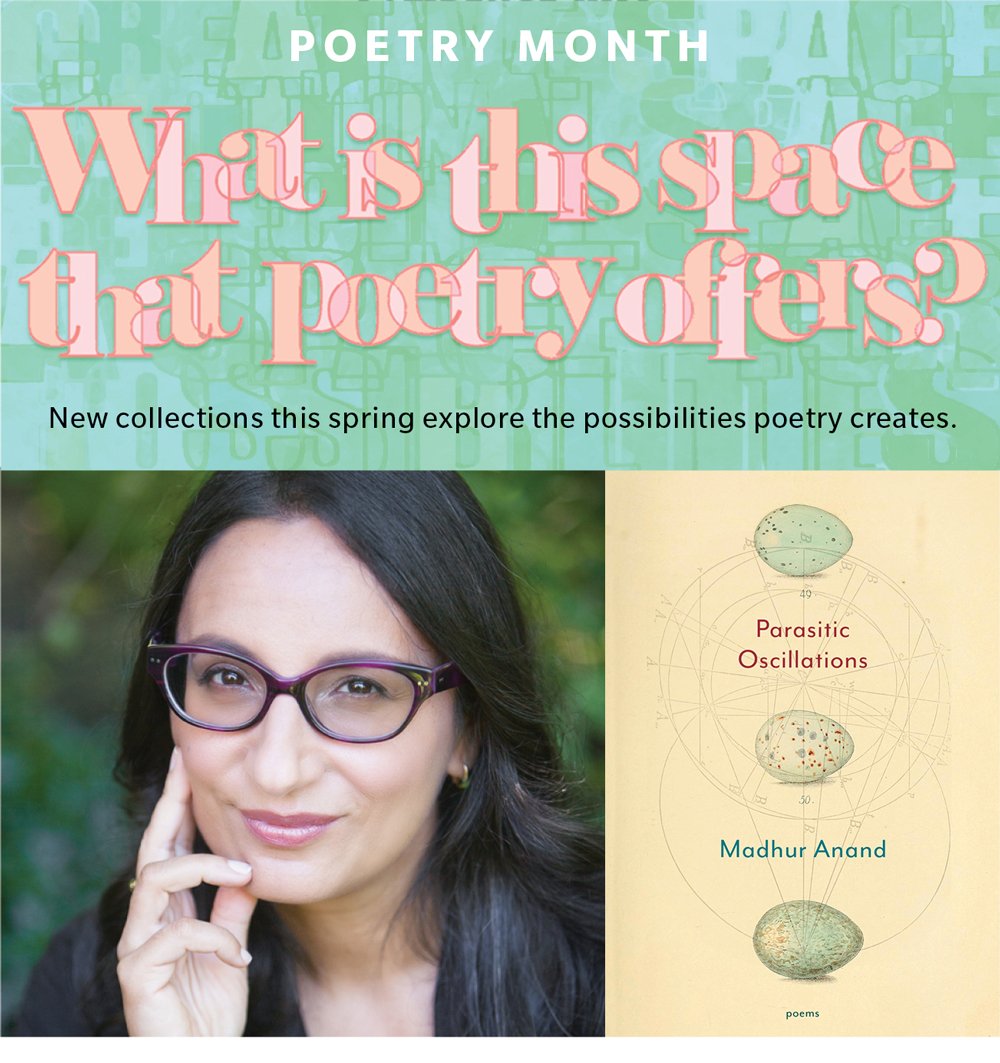When Madhur Anand was in residence at Al Purdy’s A-Frame on Roblin Lake, near the Ontario town of Ameliasburgh, she had a particularly discomfiting dream. The poet and memoirist, who holds a PhD in theoretical ecology from Western University and teaches courses on ecology and sustainability at the University of Guelph, was staying at the property in early August 2020 to work on her second collection of poetry. As she slept in Purdy’s old bed with her feet pointed toward the iconic poet’s bookshelf, she dreamt that she was being forced to choose between science and poetry.
“I don’t know by whom. By the cosmos,” Anand says on the phone from her home in Guelph, Ontario. “But they said, ‘You’re not going to wake up until you choose.’”
The conundrum is particularly profound for Anand, who in 2019 was named the inaugural director of the Guelph Institute for Environmental Research. Readers of her 2015 debut collection, A New Index for Predicting Catastrophes, will be aware of the extent to which science and the scientific method inform Anand’s poetry; the same is true for her follow-up, Parasitic Oscillations (McClelland & Stewart, out now). For a poet so invested in the worlds of science and mathematics, having to choose between two disparate vocations seemed impossible to endure.
Anand, trained in complex systems theory, places great importance on her background as a scientist. “Inherent in my identity is the language of science and the culture of science,” Anand says. “I don’t try to turn off the science [when writing poetry]. I don’t try to ignore what I know – which is a challenge at times.”
Despite the surface difficulty of rationalizing the right brain–left brain dichotomy, Anand insists that the overlaps are apparent so long as one can push one’s mode of perception far enough into the abstract to recognize them. She expresses dismay at people who try to isolate the two disciplines or try to force science into the service of art. For her, the two share a much more symbiotic, albeit somewhat mysterious, relationship. Anand recalls her surprise when an instructor in abstract algebra informed the class that they would be looking at a complex system that exists in 10 dimensions. “You can’t visualize it. It has to be imagined,” says Anand. “That’s the space between art and science.”
It is also the space in which metaphor – so essential to poetic language – is free to flourish. “If you really, really, really push two seemingly independent lines and modes of inquiry, eventually they will intersect,” Anand says. “The chances of finding coincidences and analogies, which are the fruit of metaphor, are higher. If I’m studying birdsong from both an aesthetic and a mathematical or engineering point of view, I will find synchronicities.”
Parasitic Oscillations draws on the poet’s fascination with ornithology and the nuances of birds’ vocalizations. That fascination, in turn, arose from her accidental discovery of an 1873 volume by British botanist Allan Octavian Hume called The Nests and Eggs of Indian Birds. Anand discovered the book in a library around the time she was writing the poems that would come to make up her debut collection. She has since travelled extensively to view academic collections of birds referenced in Hume’s book; Parasitic Oscillations includes visual poems made up of Anand’s photographs of bird specimens and pages from Hume’s notebooks. Another section includes QR codes that lead to recordings of various birdsongs.
The notion of song is an example of the patterns Anand discovers in the interstices between science and art. The title of her collection derives from electronics and refers to any unwanted sonic output, such as feedback from an amp. But Anand quickly realized that song is also an example of oscillation. Extending the analogy further, Anand found even more resonances between abstract scientific perception and poetic practice. “The poem itself is a song. And the scientific paper is also a song.”
One of the most ambitious sections in the book is the final one, modelled on John Ashbery’s ekphrastic poem “Self-Portrait in a Convex Mirror.” Anand’s poem “Slow Dance” contains the same number of lines and stanzas as Ashbery’s – a constraint that, paradoxically, allowed Anand the freedom to let herself go. It also underscored the intersection of her two driving impulses. “When I read [“Self-Portrait”] the first time, I was studying theoretical ecology and complex systems theory. And I found lines in it that were basically describing a complex system,” she says. “That blew me away.”
It didn’t, however, get her any closer to making the choice demanded by her dream at the A-Frame. “I feel the responsibility of having to articulate the ars poetica of art and science is a big one. I’m not there yet,” she says, though she does admit that, with more time and a greater output of poetic work behind her, she might be able to determine what the dream was trying to tell her. “I fear my answer to that question is going to be, ultimately, ‘I’m sorry, Madhur, but you are a writer.’”
Art, by Karen Taylor, is based on text from Gillian Sze’s Quiet Night Think. Madhur Anand: Karen Whylie

 Contact us via email
Contact us via email

